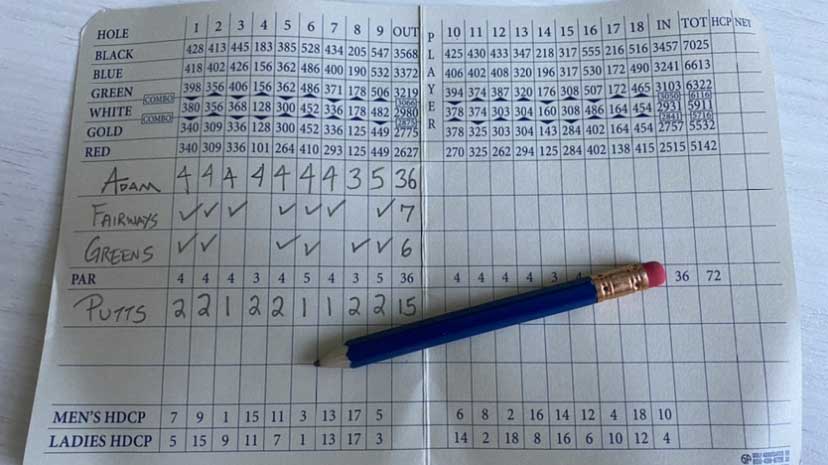When it comes to improving your game, one of the best measures you can take is reporting your on-course stats to your teacher. Indeed, getting my students to monitor their fairways in regulation, greens in regulation and total putts, as well as their score, is a big priority for me, because it better allows me to understand which parts of their games need the most attention.
This doesn’t mean you need to rush out and invest in fancy swing-tracking technology or your own personal analytics expert. There’s an old-school method that works just fine: penciling in your stats.
On your scorecard, in the corresponding columns below your name, write “fairways,” “greens” and “putts.” After each hole, record your score, then check off the boxes below your score if you hit the fairway or the green in regulation; also record the number of putts you took per hole. If you missed the fairway or missed the green, simply leave the corresponding box empty.
After your round, count how many fairways and greens you hit, and also tally up your total putts.
Arming your teacher with these basic statistics will help him or her identify your strengths and weaknesses and construct a game plan to make you a more complete golfer. This basic accounting for every shot and acting on that information will help you cash in on your scoring potential.
Adam Smith is the head golf instructor at The Country Club of Virginia and a GOLF Magazine Teacher to Watch.
